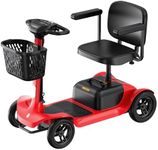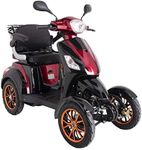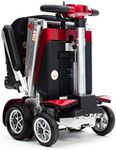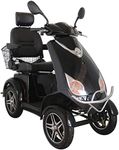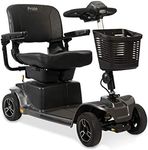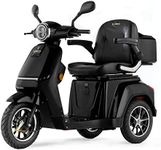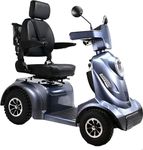Buying Guide for the Best Mobility Scooters
Choosing the right mobility scooter can greatly enhance your independence and quality of life. It's important to consider your personal needs, lifestyle, and the environments in which you'll be using the scooter. Whether you need it for indoor use, outdoor adventures, or both, understanding the key specifications will help you make an informed decision. Consider factors such as comfort, ease of use, and the type of terrain you will be navigating. By evaluating these aspects, you can find a mobility scooter that best fits your lifestyle and mobility requirements.Weight CapacityWeight capacity refers to the maximum weight a mobility scooter can safely support. This is crucial for ensuring the scooter operates efficiently and safely. Scooters typically range from supporting 250 pounds to over 500 pounds. If you are close to the upper limit of a scooter's weight capacity, it's wise to choose a model with a higher limit to ensure optimal performance and longevity. Consider your current weight and any additional items you might carry with you, such as groceries or personal belongings, when selecting a scooter.
RangeThe range of a mobility scooter indicates how far it can travel on a single battery charge. This is important for planning your trips and ensuring you don't run out of power unexpectedly. Ranges can vary from about 10 miles to over 30 miles. If you plan to use your scooter for long distances or all-day outings, a model with a longer range would be beneficial. For shorter, more frequent trips, a scooter with a smaller range may suffice. Consider your daily travel needs and choose a range that comfortably covers your typical usage.
SpeedSpeed refers to how fast a mobility scooter can travel, usually measured in miles per hour (mph). This is important for matching the scooter's performance to your lifestyle and the environments you frequent. Speeds typically range from 4 mph to 8 mph. If you need to travel quickly or navigate busy areas, a higher speed might be advantageous. However, for indoor use or crowded spaces, a lower speed may be safer and more manageable. Consider where and how you will use the scooter to determine the appropriate speed for your needs.
PortabilityPortability is about how easy it is to transport and store the mobility scooter. This is crucial if you need to take your scooter in a car or store it in a small space. Some scooters are designed to be lightweight and foldable, making them easy to carry and store. Others are more robust and may require disassembly for transport. If you frequently travel or have limited storage space, a portable model might be ideal. Consider your transportation and storage needs when evaluating portability.
ComfortComfort in a mobility scooter is determined by the seat design, suspension, and overall ergonomics. This is important for ensuring a pleasant experience, especially during long rides. Features like padded seats, adjustable armrests, and good suspension can greatly enhance comfort. If you plan to use the scooter for extended periods, prioritize models with superior comfort features. Consider your personal comfort preferences and any specific needs, such as back support, when choosing a scooter.
Terrain CapabilityTerrain capability refers to the types of surfaces a mobility scooter can handle, such as smooth pavements, rough roads, or grassy areas. This is important for ensuring the scooter can navigate the environments you frequent. Some scooters are designed for indoor use with smooth tires, while others have larger, more rugged tires for outdoor use. If you plan to use your scooter outdoors or on uneven surfaces, look for models with enhanced terrain capabilities. Consider the typical environments you will encounter and choose a scooter that can handle those conditions.


